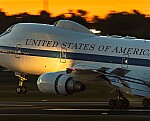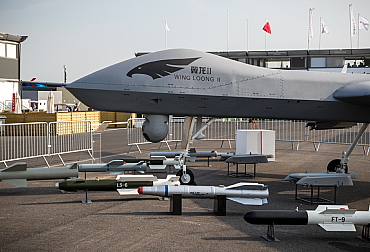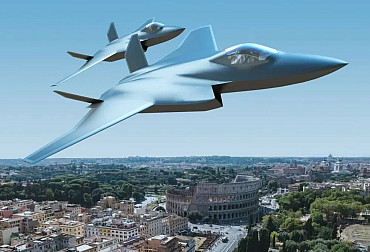Asian hypersonic developments
Hypersonic weapons will most likely play a significant role in any future inter-state conflict. States like the United States, Russia, and China are the pioneers and champions of research and development. The United States demonstrates latest developments in Guam, while there is also a new player in this field, North Korea.

In the beginning of March, the US relocated the hypersonic Advanced Rapid Response Weapon (ARRW) to its base on the islands of Guam in the Pacific. It was apparently not known why the U.S. Air Force deployed the missile to such an important place. The missile had yellow stripes at its point that indicated that the live warhead was deployed to Andersen Air Base together with the B-52 Stratofortress strategic bomber. It was also not clear whether the U.S. Air Force brought only one live ARRW or more.
In the second half of March, reports of an unprecedented live fire test of ARRW off the coast of Guam surfaced. Reportedly, this was the first time the U.S. Air Force tested a hypersonic weapon in the Pacific region. It is obvious that the test is a deterrence signal to China and could be an assurance signal for allies in the region. Unfortunately, there are no specific data and results from the test. On the other hand, one could perceive that the fact that test that the newest hypersonic missile occurred in the Pacific is a strong signal not only to China, but it could indicate the U.S. Air Force plan to continue with this weapon program although there were no plans to procure ARRW on scale.
On the other hand, as mentioned in this article before, there is also another state actor who wants to 'go hypersonic', North Korea. According to the latest news, in the beginning of April, DPRK conducted another (second in a row) test of its new hypersonic glide vehicle (HGV) from ballistic missile Hwasong-16B. According to reports, the DPRK armed forces tested a solid fuel booster for this test. On the other hand, this does not mean that the solid fuel booster is ready to be operationally deployed, although the DPRK news outlet indicated otherwise. Up to date, one cannot assess whether the HGV test succeeded or not. According to the Japanese Ministry of Defense, the tested projectile flew approximately 650 km. South Korea and the US official approximate agree, citing an approximate range of 650 kilometers. On the other hand, DPRK news outlets reported that the missile flew more than 1000 kilometers.
Apparently, the most important part of the DPRK test is not the HGV itself, which is, according to the images released by the DPRK media outlets, similar to the HGV tested in September 2021, but the solid-fuel booster or solid-fuel missile itself. This could have huge implications for regional security, as solid-fuel missiles are more reliable compared to liquid-fuel ones. Modernization of DPRK missile forces with solid-fuel missiles of various ranges and categories could mean danger mainly for US bases in Japan.
The DPRK could also potentially play a significant role in the next Indo-Pacific War. DPRK forces could block US, ROK (Republic of Korea) forces in ROK and Japanese forces in Japan, thus rendering them useless for the war against the People's Republic of China over the island of Taiwan.
It is likely that the US test of the ARRW missile and the DPRK test of Hwasong-16B with HGV are somehow linked. It is speculation, but it is unlikely that two tests of the so-called game changers are only two or three weeks away. We need to consider also the fact that the state actors testing those missiles are the US and the DPRK, two states that are not allies but rather enemies. Regarding the US test of the ARRW missile, it could be said that the US tried to deter both the DPRK and the PRC as these actors are once again getting closer to each other.
HGVs and hypersonic missiles could play a a significant role in any future war due to their maneuverability and speed. These weapon systems pose a grave threat to current air defense systems across the globe. It is not a coincidence that the US and DPRK are testing those weapon systems in the Pacific, as the importance of this region grows year by year. Due to the importance of these weapons, it is likely that we will witness another test, US, DPRK, or PRC during the coming month and years.










